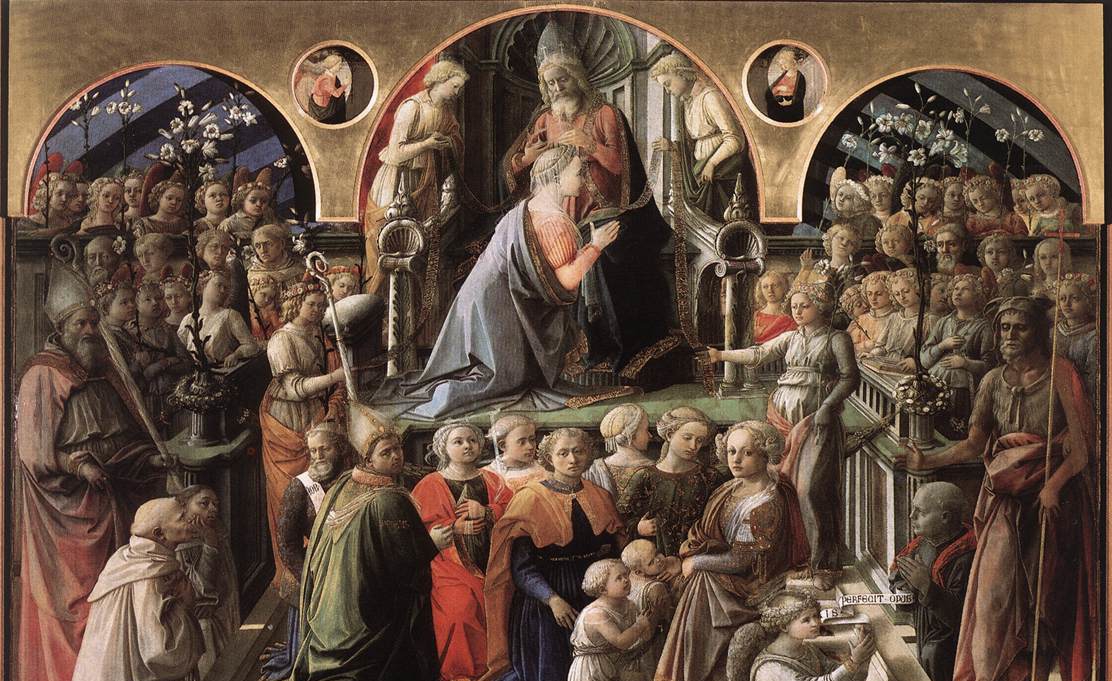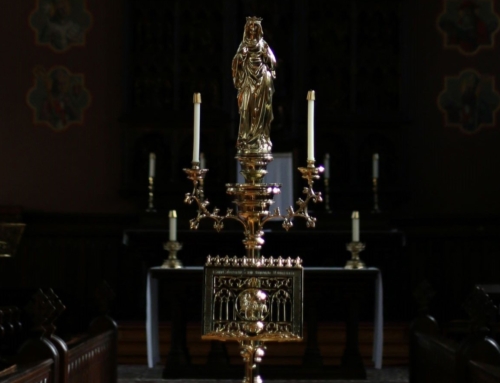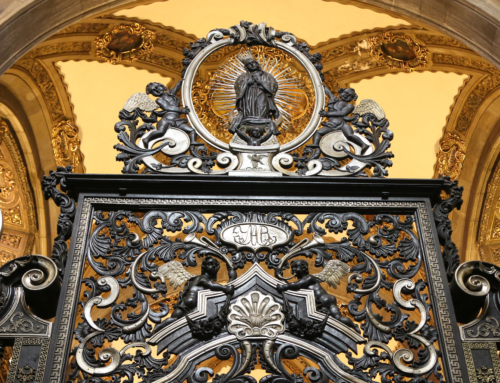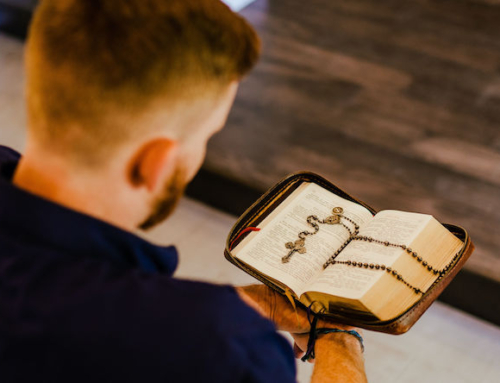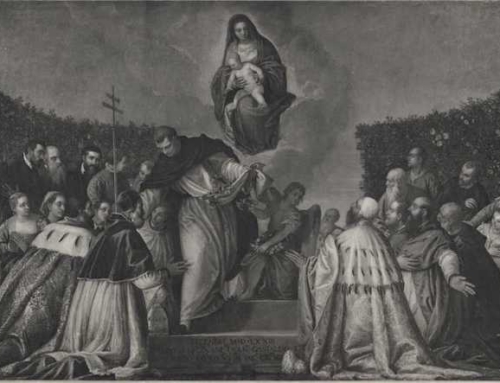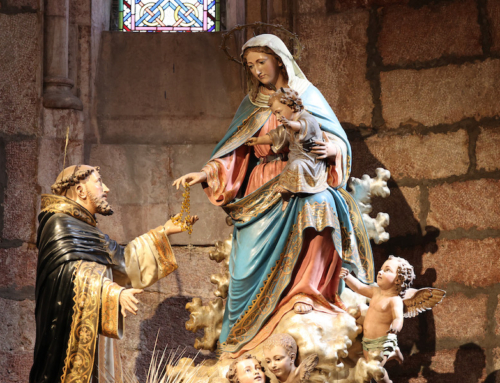“Imagine what heaven sounded like when she said fiat.”
A young man posed this thought to me in the sacristy of Our Lady of Mt. Carmel Shrine in East Harlem. It was the shrine’s patronal feast day, and the Marian procession travelling through the city had just ended. Men carried an image of the Blessed Mother throughout the streets, through the front doors of the shrine, down the center aisle, into the sanctuary, and placed her atop a pedestal. Pilgrims from near and far shook the building with their song and praise. At the end, the rejoicing swelled as the Virgin’s image came to rest in the sanctuary. The crowd celebrated Our Lady, Queen of Heaven and Earth, sitting upon her throne in the Kingdom of God.
The climax of that procession came from people who love their queen and wish to praise her in the next life. The 13th-century Franciscan theologian Conrad of Saxony writes, “They can confidently follow this queen in her kingdom if they will have followed her faithfully in this world.” This type of devotion—present in many eras of the Church—prompted Pope Pius XII to write Ad Caeli Reginam, the papal encyclical instituting today’s feast, the Queenship of Mary. He writes,
This [feast] will afford a climax, as it were, to the manifold demonstrations of Our devotion to Mary, which the Christian people have supported with such enthusiasm.
Yet, manifold celebrations—like the one the young man and I encountered—pale in comparison to the true celebration that exists in heaven. The Queenship of Mary points to our hope in salvation, but it also points to the ongoing celebration in the heavens. Heaven rejoices over its queen, and the earth cries out to its queen for salvation.
As Queen of Earth, Mary cares for her subjects with the greatest concern and tenderness. Those on earth know that “never was it known, that anyone who turned to her… was left unaided.” As the Queen of Heaven, Mary is the noblest and most beautiful creature. She far excels the angels and saints. To this point, St. Thomas writes:
The Blessed Virgin, from the fact that she is the mother of God, [has] a certain infinite dignity from the infinite good, which is God.
This infinite dignity and goodness bestowed upon her shatters contemporary notions of monarchy. Since the French and American Revolutions, royalty conjures images of decadence, indifference, oppression, and figurehead. The famous excerpt from Rousseau’s Confessions, “Let them eat cake,” encapsulates the modern image of queenship. The line is often misattributed to Marie Antoinette in order to portray her as a self-indulgent queen standing aloof from her starving subjects.
However, Our Lady does not stand aloof, indifferent, or powerless. She is the lowly “handmaid of the Lord” (Lk 1:38). Her heart was pierced, which revealed the thoughts of many hearts (Lk 2:35). With her Son, she crushes the serpent’s head and continues to lead many to conversion. She does not say, “Let them eat cake.” She rather says, “Let them eat the true bread from heaven.” As St. John Paul II writes, “She is a Queen who gives all that she possesses, participating above all in the life and love of Christ.”
She is crowned with blessedness and glory, but she also reigns. She is preeminent, the best of our race, and she is charged with governance. As Christians, we are subjects to a Blessed Lady, “who, while wielding royal power, is on fire with a mother’s love” (Ad Caeli Reginam, 43). When we pray to Our Father, “thy kingdom come,” we are praying for this mother’s love to reign within us. Her fiat is to become our fiat, so that we also will reign. This is the surest way to follow her in her kingdom.
“Imagine what heaven sounded like when she said fiat.” An impossible task. For “no eye has seen, nor ear heard, nor the heart of man conceived, what God has prepared for those who love him” (1 Cor 2:9). Follow the queen to find out.
✠
Image: Fra Filippo Lippi, The Coronation of the Virgin.

